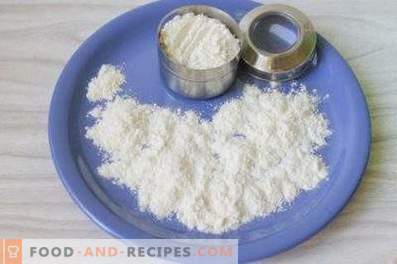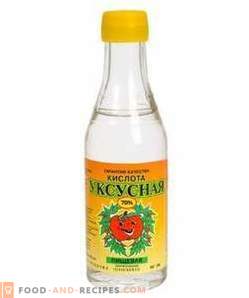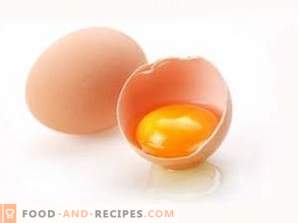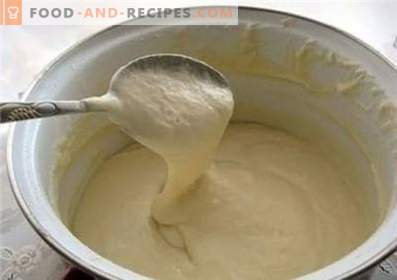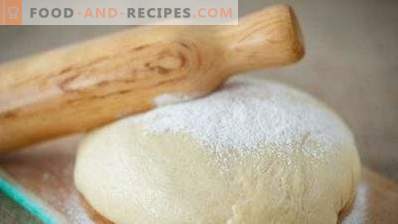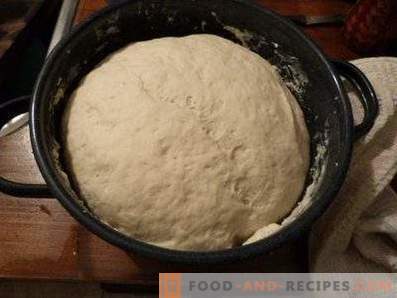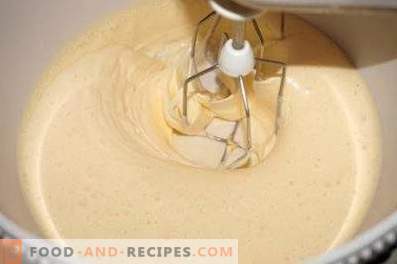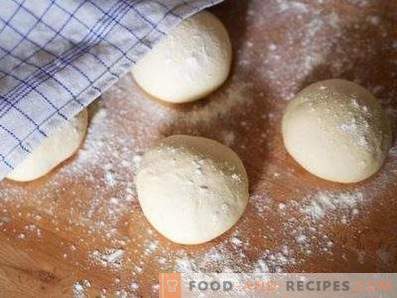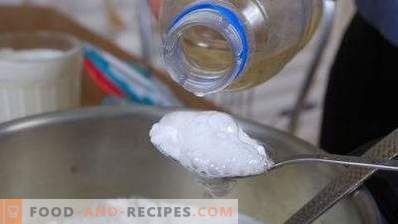
Baking soda has been used by people for a long time, but it has been applied on a commercial scale relatively recently - at the end of the 18th century. This discovery belongs to the French chemist Leblanc. In Russia, it appeared much later, when the method of its production was improved. This unique product has a wide range of uses, but it is especially appreciated by chefs. So why is sodium bicarbonate so useful in culinary?
Why extinguish soda with vinegar
People who are fond of baking, know that the basis of a successful dish is properly cooked dough. So, in order to get air and porous baking, a chemical reaction must occur, during which carbon dioxide emission increases. But soda itself is unable to emit carbon dioxide, which is why it is affected by an acidic medium - vinegar. Thanks to the above, slaked soda is actively used in culinary business. You can, of course, use a special baking powder - baking powder, but if there is no one at hand, it is easy to fix. After all, even an aspiring hostess can easily prepare the baking powder from scrap materials.
Tips for properly extinguishing soda
Introduction to the baking of slaked soda gives positive results only if the chemical reaction takes place completely. If sodium bicarbonate and acid are introduced into the dough in the wrong order and wrong ratio, it will not be sufficiently loosened, plus it may have a “soapy” taste of soda. In other words, it is necessary to observe all the nuances presented below.
- First of all, it is worth noting that for a chemical reaction with soda you should take 9% vinegar. Moreover, vinegar must be chosen based on what you are going to cook. For such a savory muffin, like pancakes and pies, white vinegar will do. For muffins, cookies, sweet cakes and cakes, it is advisable to give preference to apple cider vinegar, as it has a milder taste and a pleasant fruity smell.
- Always keep the amount of soda and vinegar. As a rule, it is indicated in the recipe. If nothing is said about this, sodium bicarbonate and acetic acid are taken in the following quantities: 1 teaspoon (without a slide) of baking soda should be ½ teaspoon of vinegar.
- The most important point is that soda should be added to the dry ingredients of the dough, and vinegar to the liquid.
- First mix the sodium bicarbonate thoroughly with flour and other loose components of the dough.
- In another bowl, mix vinegar, water, and other liquid products.
- Only after this, the resulting mixtures are combined and quickly kneaded the dough. Thus, the reaction of quenching soda occurs already in the cooking process. This method allows you to save carbon dioxide released as a result of a chemical reaction, due to which baking and acquires pomp and porosity.
Please note that if any acidic products are present in the dough, for example yogurt, honey, etc., vinegar is not required. The fact is that these products act as an acid base - a neutralizer of sodium bicarbonate, that is, a chemical reaction to release carbon dioxide will occur without the participation of vinegar.
How to replace vinegar
For the soda to neutralize the reaction, it is not necessary to use vinegar. There are also alternative options for quenching sodium bicarbonate.
The most common option is to extinguish soda with citric acid. In order for soda to fully react with citric acid, it is necessary to keep these proportions: 1 teaspoon of baking soda should have 1, 5 teaspoons of crystalline citric acid. It is important to first add citric acid to 1/3 cup of water in the dough, mix it thoroughly, and only then add sodium bicarbonate dissolved in the same amount of water. In this order of action, a chemical reaction, as in the case of soda slaking with vinegar, will occur directly in the dough, therefore, carbon dioxide will quickly and uniformly loosen it. You can also extinguish soda lemon juice. In this case, you need to act, as in the neutralization of soda with vinegar, that is, soda mixed with bulk components, and citric acid flowing. Only the ratio of these products differs. On 1 teaspoon of sodium bicarbonate should be added 9 teaspoons of citric acid.
kefir is often used to extinguish soda. In such a case, add a teaspoon of soda and 1 tablespoon of a fermented milk product to the dough. Mix thoroughly. Instead of kefir, you can also use boiling water. This method is suitable for people with stomach problems.
Following all the listed tips, you can always please your loved ones with incredibly tasty and airy baking.
